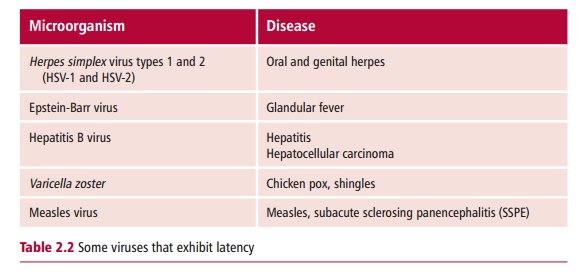Chapter: Biology of Disease: Pathogens and Virulence
Course of Infection
COURSE OF INFECTION
The course of an infection can be considered to
follow up to four major stages namely: adhesion, entry, localized infection and
generalized infection.
A virulent pathogen is one that is well adapted to
establish an infection. Most pathogens are adapted to adhere to cells, usually
epithelial, that line the site of entry. Adherence is the first stage of
infection, given that it prevents the pathogen being swept away and eliminated
from the body.
Pathogens enter the body through one of a number of
so-called portals of entry. These
include the skin and conjunctiva, respiratory tract, gastrointestinal tract
(GIT), urogenital system and, in the case of fetuses, the placenta. Once entry
has been gained, conditions for growth, such as temperature, nutrients, must be
favorable, but the pathogen must also be able to overcome the local defenses.
Pathogens are often adapted to enter their hosts through a single portal of
entry and do not cause infectious diseases if they enter through a different
portal.
A localized infection acts as a focus of infection
and, indeed, many remain local in nature or are prevented from spreading by
host defenses. If the pathogenic organisms penetrate tissues and reach the
blood or lymphatic systems or enter cells such as phagocytes, they can be
distributed throughout the body and infect other tissues and organs causing a
generalized infection. Again, certain pathogens are particularly well adapted
to infect specific target tissues and organs. During infections, the pathogen
multiplies and can be shed from the host into the environment through portals of exit. In localized infections
these are the same as that of entry; in a generalized infection, other portals
are used. These may include loss from the skin in pus, scales and blood, from
the respiratory tract as droplets and aerosols of mucus and saliva, from the
GIT in feces and bile, from the urogenital system in urine, mucus and genital
secretions and, in pregnancy, from the placenta with direct transfer to the
fetus.
A pathogen may be eliminated at any stage of the
infective process. In some cases, the growth may be held in check but not
eliminated. Such latent infections can be activated later giving recurring
infections. In some cases, individuals can recover from a disease but the
pathogen may remain in the body for considerable periods. Such people are
symptomless carriers and are reservoirs of the disease.
Some viruses which exhibit latency, with or without
sporadic reactivation are shown in Table 2.2.

Related Topics